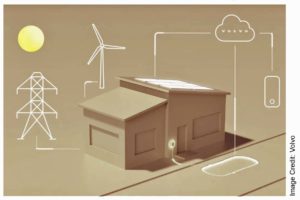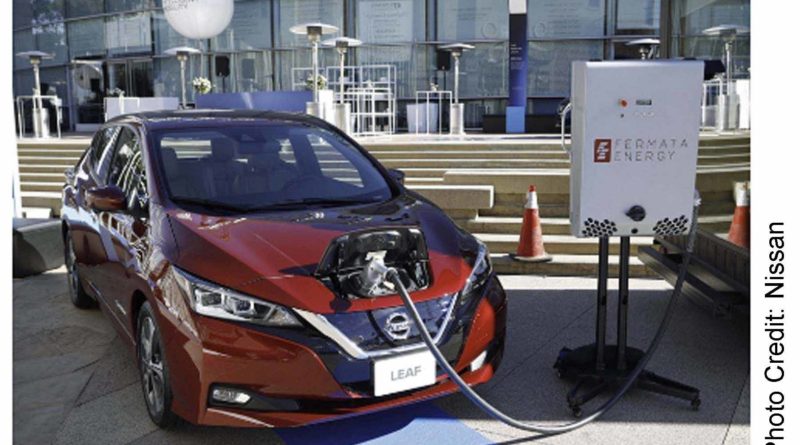Bi-Directional Charging Electric Vehicles
Many car companies are now announcing that they will stop building internal combustion engine powered vehicles by 2023. As the number of EVs sold goes up and the number of fossil fueled vehicles goes down our society creates a conundrum. The first question is where will all these new electric vehicles plug in to recharge when their batteries show a low charge? Obviously, this is only a problem when they are not being used close to their home charger.
Andrew Moseman, in a recent article published in MIT magazine (Jul/Aug 2022) points out the significance of the problem when he states that in the US in 2021 there were “around 150,000 fuel stations for fossil fueled vehicles and only “6,000 DC fast electric charging stations” for electric vehicles. He further points out that new electric vehicle sales have jumped from 10,000 in 2012 to 400,000 in 2021. To start to fix the lack of EV chargers in the US, the 2021 infrastructure bill set aside $7.5 billion to build 500,000 EV Chargers. Creating more locations for people to charge their electric vehicles just puts more strain on the US power grid.
Increased sales of EVs becomes a problem because the amount of electricity generated by renewable and non-renewable power plants must always exactly match the amount of electricity that is being consumed moment to moment to prevent electric brownouts or backouts. As we reduce our reliance on fossil fuels to generate electricity and increase our reliance on Wind and Solar generation, we need to find a way to make available the electricity that is needed when the sun doesn’t shine and the wind doesn’t blow.
Electric Grid
A recent study by professor Ram Rajagopal of Stanford University specifically warns that our current electric grid, without a major upgrade, is not capable of supporting major sales of electric vehicles. This past summer Elliot Mainzer California’s chief executive in charge of the CA power grid issued an alert warning residents that the extreme heatwave that California was experiencing was creating a “historically high demand for electricity and if residents didn’t reduce their use, the CA grid might not be able to meet demand which could lead to blackouts”.(www.latimes.com/california/story/2022-09-05) At CES 2021 a panel of experts warned that at this moment if most owners of an EV in California were to all plug their cars into their home charging stations during high peek electric demand CA would experience a major backout even without a heatwave.
To stop selling fossil fuel powered cars by 2023 we need to upgrade the power grid and install Bi-Directional Charging systems into all new Electric Vehicles. Nissan, Volvo, and GM have now all announced that they will be including this system in their 2023 or 2024 electric vehicles. An EV with this type of charging system could provide electricity to your home (V2H) during a blackout and hopefully in the near future stabilize the electric grid to prevent power blackouts.
The US is becoming serious about updating our electric grid to a smart Transactive Energy system that would welcome Vehicle to Grid (V2G) transfer of electricity. With this update hundreds or thousands of EVs that are plugged into a home recharging system during high periods of electric demand, could act as an axillary power station. As the electricity flows from these EVs to the electric grid the owners of these cars will have their electric meter spin backwards reducing their electric bill. The transactive part of the smart grid would automatically recharge these vehicles during low demand, further saving these owners money.
Taking it a Step Further
- Describe the difference between vehicle to grid (V2G) and vehicle to home (V2H).
- Why is V2G better than just V2H but much harder to initiate?
- In your opinion does V2G and V2H turn an electric vehicle into a miniature power plant? Why?
https://www.technologytoday.us/
By: Alan J. Pierce EdD, pierceaj@techtoday.us and Rochelle (Shelley) Pierce Bi-Directional Charging Electric Vehicles
https://www.techedmagazine.com/category/news/transportation/


